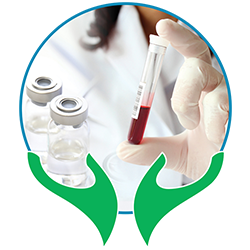-
 Erythrocyte Sedimentation Rate
Erythrocyte Sedimentation Rate Erythrocyte Sedimentation Rate - Parameters: 0
Erythrocyte Sedimentation Rate
-
 Full Blood Count
Full Blood Count Full Blood Count - Parameters: 25
Full Blood Count
-
 Glycocylated haemoglobin(HbA1c)
Glycocylated haemoglobin(HbA1c) Glycocylated haemoglobin(HbA1c) - Parameters: 2
Glycocylated haemoglobin(HbA1c)
-
 Iron Studies
Iron Studies Iron Studies - Parameters: 3
Iron Studies
-
 Thyroid Stimulating Hormone
Thyroid Stimulating Hormone Thyroid Stimulating Hormone - Parameters: 0
Thyroid Stimulating Hormone
-
 Vitamin B12
Vitamin B12 Vitamin B12 - Parameters: 0
Vitamin B12










